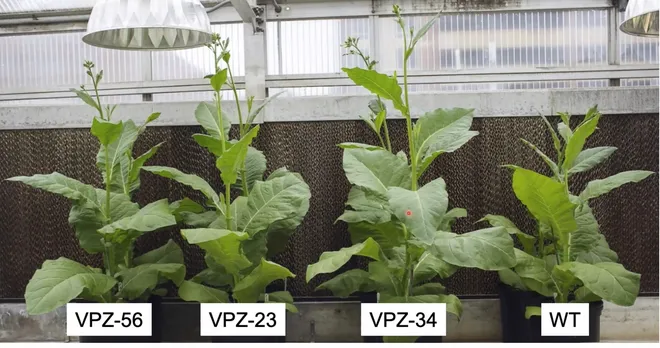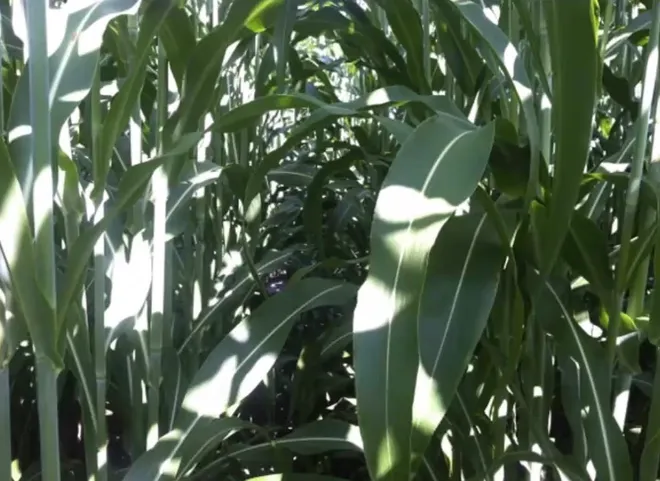ORHS grad's research might boost food production

Kris Niyogi, an Oak Ridge High School graduate, led more than 10 years of research at Berkeley, Calif., that resulted in explanations of how green plants protect themselves from excess sunlight. The work earned him election in 2016 to the National Academy of Sciences.
This prestigious honor was previously awarded in 1998 to his mother, Audrey Stevens, a biochemist at Oak Ridge National Laboratory. She discovered the enzyme that copies DNA into the RNA molecules it makes, including messenger RNA.
Applying the new understanding of plants’ photoprotection mechanisms, Niyogi and his collaborators are identifying ways to help improve food crop productivity.

“Much of the research in my lab is motivated by the need to increase and sustain food production this century to meet rising demand,” said Niyogi during his recent Dick Smyser Community Lecture, sponsored by the Friends of ORNL, and held via Zoom. This was FORNL’s first Smyser lecture for 2021, which honors Smyser, the first editor of The Oak Ridger and an active FORNL member.
“The United Nations Food and Agriculture Organization estimates that food production must nearly double by 2050 to meet increasing demand for food because of population growth and urbanization,” Niyogi noted. “The sustainability of our food supply in certain parts of the world is under threat because of rising temperatures, drought stress, flooding from extreme weather events and rising sea levels associated with climate change.”

Two-thirds of the calories consumed globally come from four staple crops — maize, rice, wheat and soybeans. Using funding from the Bill and Melinda Gates Foundation and other U.S. agencies, he said his lab at the University of California at Berkeley and collaborators have obtained “promising results." These results indicate they can likely boost the growth of crops of rice in Southeast Asia, soybeans in the U.S. and cassava and cowpea, major foods in sub-Saharan Africa.
Niyogi is a Howard Hughes Medical Institute investigator, a professor in the Department of Plant and Microbial Biology at UC Berkeley and a faculty scientist in the Molecular Biophysics and Integrated Bioimaging Division at the U.S. Department of Energy’s Lawrence Berkeley National Laboratory. He performed research for two summers in ORNL’s Biology Division (where his parents both worked), and he has a Ph.D. in plant genetics and molecular biology from MIT.
Speaking on “Understanding Photosynthesis to Improve Crop Productivity,” Niyogi explained that photosynthesis is the process by which a plant absorbs sunlight and converts the light energy into chemical energy. As a result, the plant can break down the carbon dioxide and water molecules it absorbs and reorganize them to make sugar molecules, generating the plant’s biomass and oxygen.
In the 20th century breeding effort known as the Green Revolution, the yields of wheat, rice and other crops have increased. But, Niyogi said, it is thought crop yields could be further boosted by improving plants’ efficiency in converting absorbed sunlight into biomass.
Theoretically, plants should be able to turn 4.6% of the sunlight they receive into sugars through photosynthesis. But, he explained, the conversion efficiency is reduced by drought stress, insufficient fertilizer, temperature extremes and pathogens. Another stressor is “light saturation,” the absorption by plants of more sunlight than they can use during parts of the day.

“When plants absorb sunlight that’s in excess of their capacity to use it for photosynthesis, the non-photochemical quenching, or NPQ, process kicks in,” Niyogi said, noting that he and his research group did not discover the process, but did help determine how it works.
“It’s like a safety valve for photosynthesis. As the light intensity saturates photosynthesis, the NPQ turns on and dials up like a dimmer switch and safely dissipates the light energy as thermal energy, or heat. That protects the plant from the damaging effects of too much sunlight.”
During the day, plants are exposed to fluctuating sunlight levels as a result of passing clouds and canopy shading of lower leaves. Under bright sunlight, NPQ photoprotection turns on, but as the light level lowers, NPQ does not switch off quickly. Thus, it dissipates energy that could be used to fix carbon and grow the plant faster.
So, Niyogi and his colleagues looked for ways to alter a model plant genetically so it would switch off photoprotection more quickly as light levels decline.
“Our goal was speeding up recovery from NPQ to improve photosynthesis and increase crop yield,” he said.
The Niyogi lab collaborated with a group led by Professor Stephen Long at the University of Illinois to do greenhouse experiments and field studies of the growth of genetically altered tobacco. They used tobacco as a model crop plant because it is easy to transform by inserting genes to change the amount or type of protein desired, and it grows as a three-dimensional canopy similar to food crops.
In the earlier experiments that Niyogi led, researchers made a variety of mutant “Arabidopsis thaliana” plants to identify which genes are needed to do NPQ (measured by video imaging of fluctuations in chlorophyll fluorescence) or other aspects of photosynthesis. This species is called the “fruit fly of the plant world” because it has a rapid life cycle and its small genome is completely sequenced and can be easily mutated.
“It’s like figuring out how a car works by removing one part at a time,” he said. If you want to determine what stops the car, he added, you won’t find that out by removing the windshield wipers, but you will by removing the brakes.
By manipulating three genes in tobacco to ramp up their production of three proteins, the researchers showed they could accelerate the plant’s recovery from NPQ’s inhibiting effects on plant growth. The altered, or transgenic, plants grew larger than the control wild-type plants in the greenhouse.
“We found the NPQ turns off a little bit faster and more completely over a few minutes after the light intensity dropped, putting sunlit leaves into shade,” Niyogi said. “During those few minutes, our measurements of carbon dioxide showed these plants fixed a little more carbon than the wild-type plants.”
The results became more exciting when the model plant was grown as a crop in an Illinois field.
“We found an increase in biomass over the whole tobacco crop that ranged from 14% to 20% higher than the control plants in the field,” Niyogi said. “This was an amazing and striking result. It way exceeded my expectations for what we might accomplish in this experiment. I was surprised and gratified by the results from Illinois.”
Niyogi’s lab at Berkeley has been participating with other research institutions in Australia, China, the United Kingdom and United States in RIPE (Realizing Increased Photosynthetic Efficiency), funded partly by the Gates Foundation. One strategy at the University of Illinois has increased crop biomass by up to 40%.
The Niyogi lab, he said, has also been looking at ways to slow climate change by using plants not only to store rising levels of carbon dioxide above ground, but also to sequester the greenhouse gas more effectively as carbon in soils and roots.
In answer to a question, he said that “an interesting idea” is to place semi-transparent, electricity-generating solar arrays over a field of crops. Such arrays might be designed to allow the right amount of light with specific wavelengths to illuminate the genetically modified, or gene-edited, plants below, increasing their photosynthesis and yield.
Oak Ridge memories
At the beginning of his talk, Niyogi told his Oak Ridge audience and fellow classmates, “I loved my time growing up in Oak Ridge (from 1966 to 1983). I remember playing with all the neighborhood kids. I played soccer in the youth league my dad helped start.
“I met lifelong friends at school. Teachers in Oak Ridge schools inspired me to pursue a career in science. I really loved biology, I’m an excellent hybrid of my parents, and I inherited a love of science from them.”
By: Carolyn Krause || The Oak Ridger
RELATED RIPE OBJECTIVES
Relaxing Photoprotection